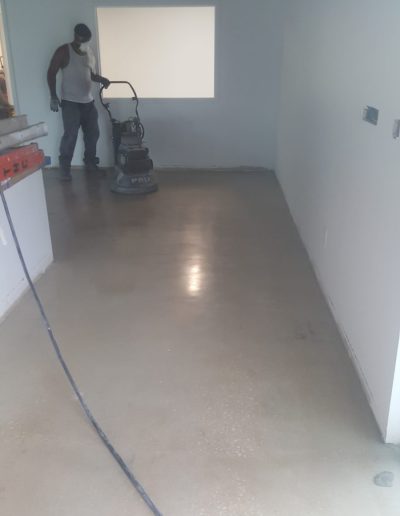The New Alternative for Commercial Flooring
Commercial Floor Benefits
Polished concrete is considered a good sustainable design flooring option because it makes use of the materials already present. Most modern buildings are built on a concrete floor slab; polishing the exposed concrete eliminates the energy and material consumed by applying a floor covering. It is something to consider when building or modernizing towards a more green solution.
Polished concrete floors are low maintenance, as they are more durable and easier to clean than many floor options. Its relatively high coefficient of friction can make it non-slippery. Polished concrete reduces dust mite and allergen problems, and does not support mold growth.
Residential Polished Floor Benefits:
Cost savings
Traditional floor covering materials are not necessary when the slab on grade is used as the finished floor surface
Longer life-cycle savings
Polished floors are not as vulnerable to damage as other materials and do not need replacing
Easy to clean
Won’t harbor dust, dirt, allergens
Available in wide variety
Colors and Designs
Commercial and Retail Polished Floor Benefits:
- Cost savings: Using the slab on grade as the finished floor surface is more cost effective, maintenance costs are lower
- More resistant to high foot traffic. A grocer in Tennessee explains that he is able to maintain primarily just the traffic ways within his store, which saves time and money because he does not have to move large display cases to wax and strip the floor.
- Less maintenance and longer service life: Polished floors are easy to clean, requiring only occasional damp mopping. They also eliminate the need for messy waxes or coatings as well as the associated labor, time, and expense to apply them. The glossy surface of polished concrete resists the marks of forklift truck tires and staining from oil and chemical spills.
- Resistant to moisture transmission issues: Polished concrete allows the floor to breathe and eliminates issues that arise with other flooring materials that seal off the concrete, such as tile, etc.
- High light reflectivity: Important for office buildings floors, hotels, restaurants, and other public facilities that want to project a bright, clean, professional image. Also saves energy by reducing artificial lighting requirements
- Is a sustainable flooring alternative that does not require hazardous coatings, cleaners or adhesives.
Polished Concrete Versatility
Because polishing is a multi-step process, homeowners and business owners can choose the level of sheen from stain to high-gloss that meets their maintenance and aesthetic requirements. This versatility makes polished concrete an ideal flooring material for a variety of applications.
Cost Savings
Available in wide variety of Colors and designs
Longer Life-Cycle
More resistant to high foot traffic
Easy to Clean
High light reflectivity
New or Retrofit
In simple terms, the process of polishing concrete is similar to sanding wood. Heavy –duty polishing machines, for example concrete grinder, are used to gradually grind down surfaces to the desired degree of shine and smoothness. The closest equivalent example would be polished granite or marble.
Polished concrete floor installation is categorized into two types: new floors, and retrofit floors. New floors require less work resulting in lower costs. Retrofit floors can be done in two ways. The existing floor slab can be cut or sanded and the natural aggregate will be the feature or a topping slab with a minimum thickness of 50mm can be added on top of the existing slab.








